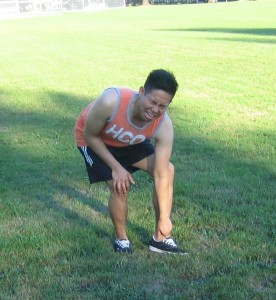Epidermolysis bullosa is a set of uncommon diseases that causes the blistering of the skin. A blister will happen as a result of a small injury, friction or heat caused by rubbing, scratching as well as the use of adhesive tape. In a severe case, the blisters can happen within the body, it can be found in the coating of the intestines or the mouth. This type of skin disorder is inherited and happens during infancy or early childhood.
[youtube url=”https://www.youtube.com/watch?v=RwQipIdSc2g”]Symptoms of epidermolysis bullosa
- There is deformity or loss of fingernails and toenails
- Blisters that are filled with fluids can form in the skin on the hands and feet caused by friction
- Skin thickening can happen on the palms and soles of the feet
- Thin skin or atrophic scarring
- There is difficulty in swallowing or dysphagia, dental problems like tooth decay from enamel that is poorly formed.
- There is internal blistering that can form on the vocal cords, esophagus and upper airway.
- Tiny white skin bumps or pimples can form
- Scalp blistering, scarring and loss of hair

Epidermolysis bullosa blisters do not occur until the toddler begins to walk or until an older child will start some physical activities that will cause intense friction on the feet.
Different types of bullosa
- Epidermolysis bullosa simplex is the most common form and usually begins at birth or infancy and affects the soles of the feet and palms.
- Dystrophic epidermolysis bullosa can cause mild to severe symptoms and appears at birth or early childhood.
- Epidermolysis bullosa acquisita is a rare type and is not inherited. The blisters are caused by the immune system that attacks the healthy tissues by mistake. The blisters are found in the hands, feet and the mucous membranes.
Treatment and home remedies
The wound should be carefully treated and maintaining good nutrition is very important for people with epidermolysis bullosa. Blisters can cause scarring, deformity and infections. If blisters are not drained, they can become large which will create a big wound when they will finally break. If you want to properly manage the blisters, click here.
Some steps in treating a child’s wound include the following:
- Wash hands before touching the blisters or changing the dressings
- If a soiled dressing sticks to a blister, soak the area in warm water until the dressing loosens.
- Take non-prescription pain medications, taken orally or placed to the dressings
Caring for the skin
- In order to minimize pain after 30 minutes before a dressing change or other procedures, children and adults should take prescribed pain medications and those who do not respond to pain medications must take anti-seizure drugs
- Clean the wound by soaking it for 10 minutes in a mixture of a mild solution of salt and water. You can also use a mixture of diluted vinegar or bleach. Soaking can reduce the pain while changing bandages and then rinse the wound in lukewarm water.
- Puncture new blisters that form to prevent them from spreading. Use a sterile needle and leave the roof of the blister intact for drainage while protecting the underlying skin.
- Apply creams or lotions and cover the affected areas with a non-stick bandage.
- Wrap hands and feet that are blistered daily to help prevent deformities and fusion of the fingers and toes.
